This site uses cookies as defined in our Cookie Policy, by continuing to use this site you agree to their use.
Continue
| Arrive | Depart | ||||||
| 24th24 | OctOct | 201919 | Dubrovnik, Croatia, embark on the Marella Celebration | ||||
| Nothing can prepare you for your first sight of Dubrovnik. Lying 216 km (135 miles) southeast of Split and commanding a jaw-dropping coastal location, it is one of the world's most beautiful fortified cities. Its massive stone ramparts and fortress towers curve around a tiny harbor, enclosing graduated ridges of sun-bleached orange-tiled roofs, copper domes, and elegant bell towers. Your imagination will run wild picturing what it looked like seven centuries ago when the walls were built, without any suburbs or highways around it, just this magnificent stone city rising out of the sea.In the 7th century AD, residents of the Roman city Epidaurum (now Cavtat) fled the Avars and Slavs of the north and founded a new settlement on a small rocky island, which they named Laus, and later Ragusa. On the mainland hillside opposite the island, the Slav settlement called Dubrovnik grew up. In the 12th century the narrow channel separating the two settlements was filled in (now the main street through the Old Town, called Stradun), and Ragusa and Dubrovnik became one. The city was surrounded by defensive walls during the 13th century, and these were reinforced with towers and bastions in the late 15th century.From 1358 to 1808 the city thrived as a powerful and remarkably sophisticated independent republic, reaching its golden age during the 16th century. In 1667 many of its splendid Gothic and Renaissance buildings were destroyed by an earthquake. The defensive walls survived the disaster, and the city was rebuilt in baroque style.Dubrovnik lost its independence to Napoléon in 1808, and in 1815 passed to Austria-Hungary. During the 20th century, as part of Yugoslavia, the city became a popular tourist destination, and in 1979 it was listed as a UNESCO World Heritage Site. During the war for independence, it came under heavy siege. Thanks to careful restoration, few traces of damage remain; however, there are maps inside the Pile and Ploče Gates illustrating the points around the city where damage was done. It’s only when you experience Dubrovnik yourself that you can understand what a treasure the world nearly lost | |||||||
| 25th25 | OctOct | 201919 | Hvar Island, Croatia | 07:00 | 18:00 | ||
| The Croatian island of Hvar bills itself as the "sunniest island in the Adriatic." Not only does it have the figures to back up this claim—an annual average of 2,724 hours of sunshine—but it also makes visitors a sporting proposition, offering them a money-back guarantee if there are seven consecutive days of snow (snow has been known to fall here; the last time being February 2012). | |||||||
| 26th26 | OctOct | 201919 | Ancona, Italy | 08:00 | 18:00 | ||
| Ancona is the capital of Italy's Marche region. Ancona's main attraction is her tactile museum for the blinds. It's also a great place to take a dip and enjoy great sea views under the sunshine. | |||||||
| 27th27 | OctOct | 201919 | Venice, Italy | 08:00 | 23:00 | ||
| Venice is a city unlike any other. No matter how often you've seen it in photos and films, the real thing is more dreamlike than you could imagine. With canals where streets should be, water shimmers everywhere. The fabulous palaces and churches reflect centuries of history in what was a wealthy trading center between Europe and the Orient. Getting lost in the narrow alleyways is a quintessential part of exploring Venice, but at some point you'll almost surely end up in Piazza San Marco, where tourists and locals congregate for a coffee or an aperitif. | |||||||
| 28th28 | OctOct | 201919 | Koper, Slovenia | 09:00 | 19:00 | ||
| Today a port town surrounded by industrial suburbs, Koper nevertheless warrants a visit. The Republic of Venice made Koper the regional capital during the 15th and 16th centuries, and the magnificent architecture of the Old Town bears witness to the spirit of those times.The most important buildings are clustered around Titov trg, the central town square. Here stands the Cathedral, which can be visited daily from 7 to noon and 3 to 7, with its fine Venetian Gothic facade and bell tower dating back to 1664. Across the square the splendid Praetor's Palace, formerly the seat of the Venetian Grand Council, combines Gothic and Renaissance styles. From the west side of Titov trg, the narrow, cobbled Kidriceva ulica brings you down to the seafront. | |||||||
| 29th29 | OctOct | 201919 | Rijeka, Croatia | 08:00 | 17:00 | ||
| Water is the essence of Kvarner, and the region's largest city expresses this simply. Whether in Croatian or Italian (Fiume) the translation of the name to English is the same: river. Although the history of Croatia's third city goes back to the days of Imperial Rome, modern Rijeka evolved under the rule of Austria-Hungary. The historic core retains vestiges of the old Habsburg monarchy from the time when Rijeka served as the empire's outlet to the Adriatic. During the 1960s, under Yugoslavia, the suburbs expanded rapidly. Rijeka is the country's largest port, with a huge shipyard, massive dry-dock facilities, refineries, and other heavy industries offering large-scale employment. Since the breakup of Yugoslavia, however, Rijeka's role as a shipping town has declined significantly. Much business shifted north to the smaller Slovene ports during the crippling wars of the 1990s, and although some has returned, the volume remains less than half that seen in 1980. | |||||||
| 30th30 | OctOct | 201919 | Split, Croatia | 08:00 | 17:00 | ||
| Split's ancient core is so spectacular and unusual that a visit is more than worth your time. The heart of the city lies within the walls of Roman emperor Diocletian's retirement palace, which was built in the 3rd century AD. Diocletian, born in the nearby Roman settlement of Salona in AD 245, achieved a brilliant career as a soldier and became emperor at the age of 40. In 295 he ordered this vast palace to be built in his native Dalmatia, and when it was completed he stepped down from the throne and retired to his beloved homeland. Upon his death, he was laid to rest in an octagonal mausoleum, around which Split's magnificent cathedral was built.In 615, when Salona was sacked by barbarian tribes, those fortunate enough to escape found refuge within the stout palace walls and divided up the vast imperial apartments into more modest living quarters. Thus, the palace developed into an urban center, and by the 11th century the settlement had expanded beyond the ancient walls.Under the rule of Venice (1420–1797), Split—as a gateway to the Balkan interior—became one of the Adriatic's main trading ports, and the city's splendid Renaissance palaces bear witness to the affluence of those times. When the Habsburgs took control during the 19th century, an overland connection to Central Europe was established by the construction of the Split–Zagreb–Vienna railway line.After World War II, the Tito years saw a period of rapid urban expansion: industrialization accelerated and the suburbs extended to accommodate high-rise apartment blocks. Today the historic center of Split is included on UNESCO's list of World Heritage Sites. | |||||||
| 31st31 | OctOct | 201919 | Dubrovnik, Croatia, disembark the Marella Celebration | ||||
| Nothing can prepare you for your first sight of Dubrovnik. Lying 216 km (135 miles) southeast of Split and commanding a jaw-dropping coastal location, it is one of the world's most beautiful fortified cities. Its massive stone ramparts and fortress towers curve around a tiny harbor, enclosing graduated ridges of sun-bleached orange-tiled roofs, copper domes, and elegant bell towers. Your imagination will run wild picturing what it looked like seven centuries ago when the walls were built, without any suburbs or highways around it, just this magnificent stone city rising out of the sea.In the 7th century AD, residents of the Roman city Epidaurum (now Cavtat) fled the Avars and Slavs of the north and founded a new settlement on a small rocky island, which they named Laus, and later Ragusa. On the mainland hillside opposite the island, the Slav settlement called Dubrovnik grew up. In the 12th century the narrow channel separating the two settlements was filled in (now the main street through the Old Town, called Stradun), and Ragusa and Dubrovnik became one. The city was surrounded by defensive walls during the 13th century, and these were reinforced with towers and bastions in the late 15th century.From 1358 to 1808 the city thrived as a powerful and remarkably sophisticated independent republic, reaching its golden age during the 16th century. In 1667 many of its splendid Gothic and Renaissance buildings were destroyed by an earthquake. The defensive walls survived the disaster, and the city was rebuilt in baroque style.Dubrovnik lost its independence to Napoléon in 1808, and in 1815 passed to Austria-Hungary. During the 20th century, as part of Yugoslavia, the city became a popular tourist destination, and in 1979 it was listed as a UNESCO World Heritage Site. During the war for independence, it came under heavy siege. Thanks to careful restoration, few traces of damage remain; however, there are maps inside the Pile and Ploče Gates illustrating the points around the city where damage was done. It’s only when you experience Dubrovnik yourself that you can understand what a treasure the world nearly lost | |||||||
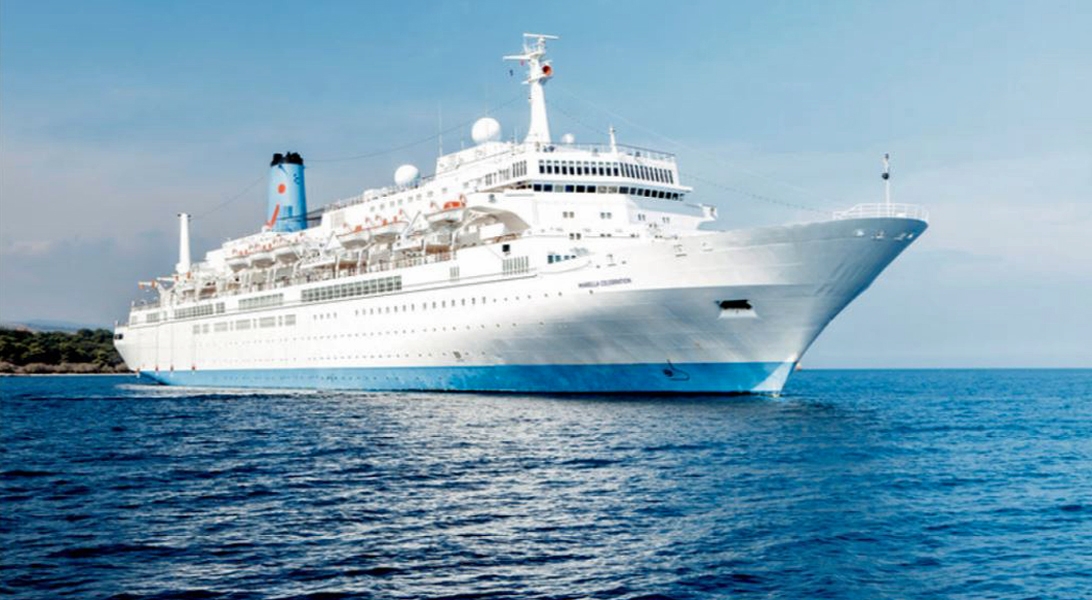









The images shown are for illustration purposes only and may not be an exact representation of what you find on the ship.
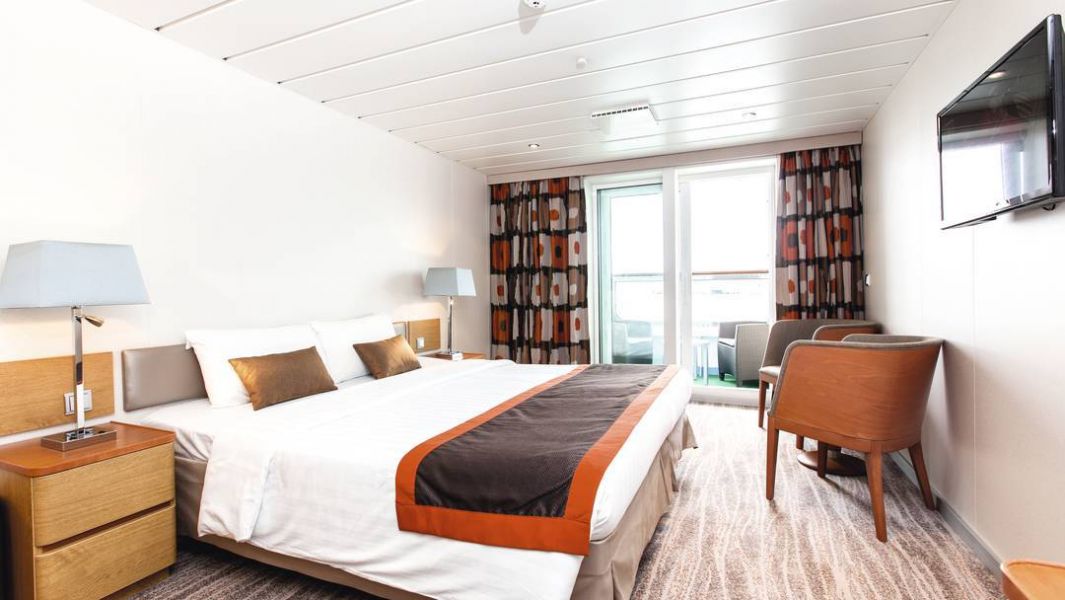
You can make the most of the sea views here, thanks to wide glass doors that open out to a furnished private balcony. The inside space is just as welcoming. In terms of size, you’ve got 18-19m². There's a table and chairs for relaxing, a minibar, and a queen-size bed for a good night’s rest. Just so you know, some cabins have parallel twin single beds that convert to a double bed. The en suite bathroom has a shower over a bath and a WC.
This cabin comes with Premier Service extras included:
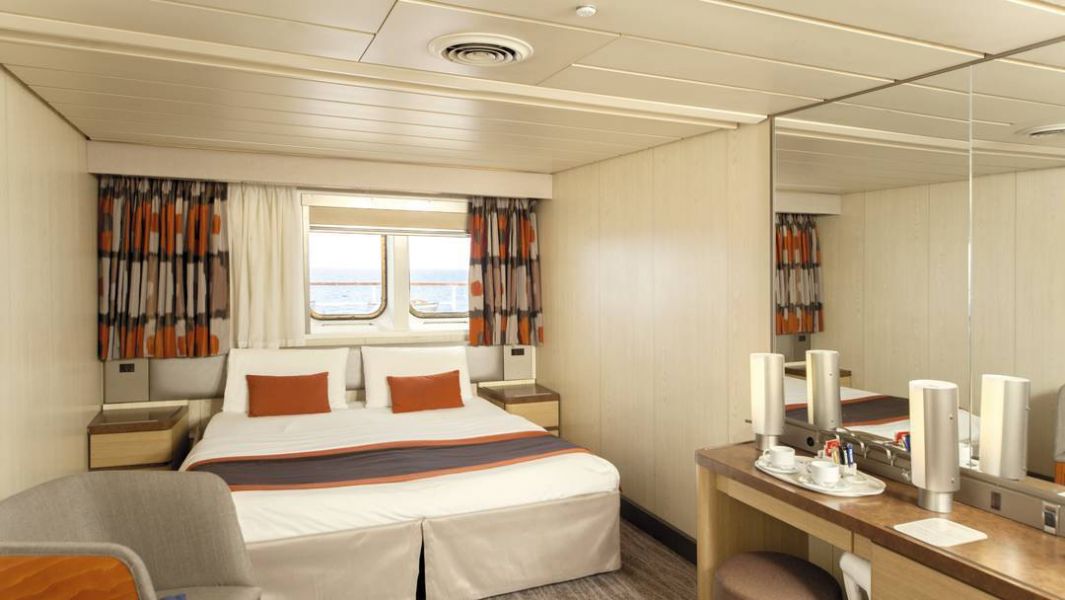
These Deluxe cabins are located on decks 6-8 and measure a roomy 19m². They have a picture window, a minibar, and a table and chairs for relaxing. A queen-size bed makes for a good night’s rest. Just so you know, a folding bed sleeps a third person, and some cabins have parallel twin single beds that convert to a double bed. The en suite bathroom has a shower over a bath, and a WC.
Some of these cabins are interconnecting. Ask your travel agent for details.
The view from some Deluxe cabins may be partially obstructed by lifeboats. Reserve your cabin for a clear view.
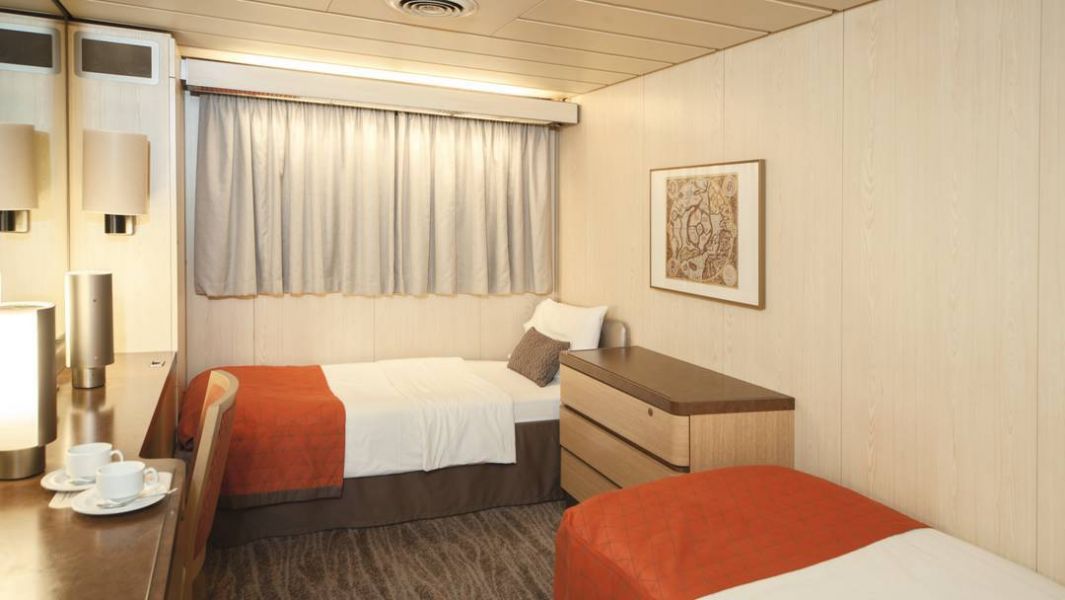
These cabins have 2 single beds side by side in an L-shape, or a queen-size bed. 3- and 4-berth cabins have twin beds and upper berths that fold away, plus extra wardrobe space. The en suite bathrooms have a shower and WC. Size-wise, you’ve got 13-16m² of space.
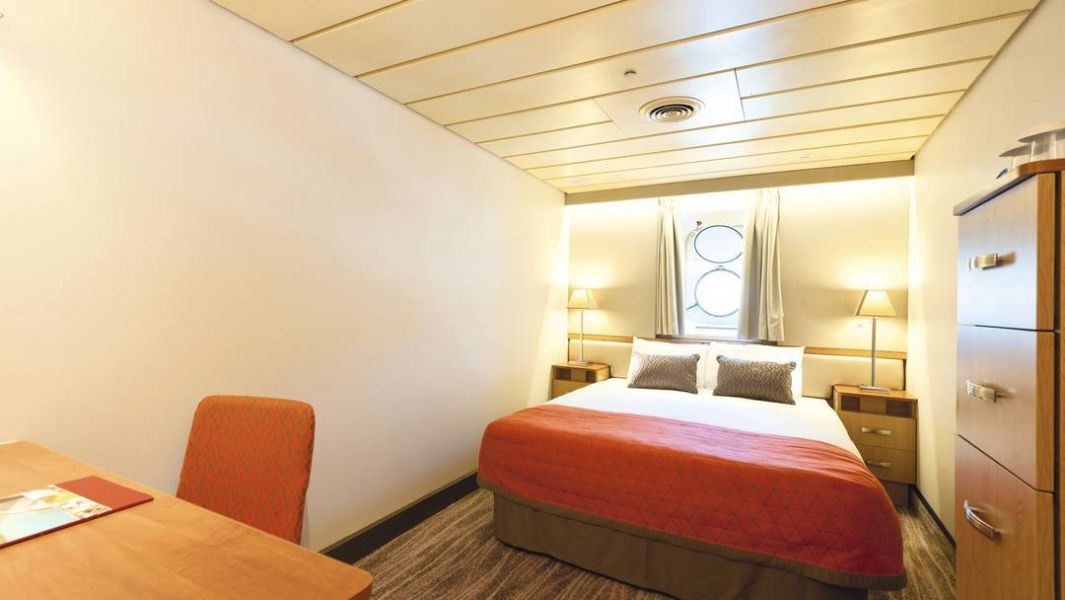
All Outside cabins have portholes and are 13-16m². You’ll get 2 beds side by side or in an L-shape, or a queen-size bed. 3- and 4-berth cabins have twin beds and upper berths that fold away, plus extra wardrobe space. The en suite bathrooms have a shower and WC.
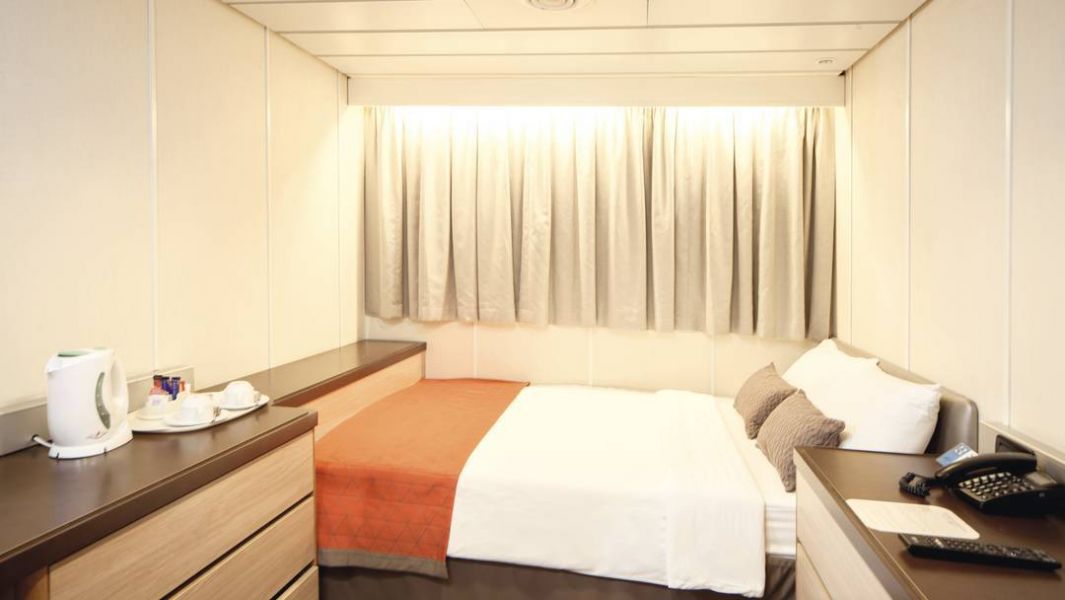
Available Outside and Inside, these compact yet comfortable cabins are designed with the single traveller in mind.
Each come with a single bed and an en suite bathroom with a shower and WC. Outside cabins also have a porthole.
They’re often booked by solo cruisers or friends who prefer not to share when travelling.
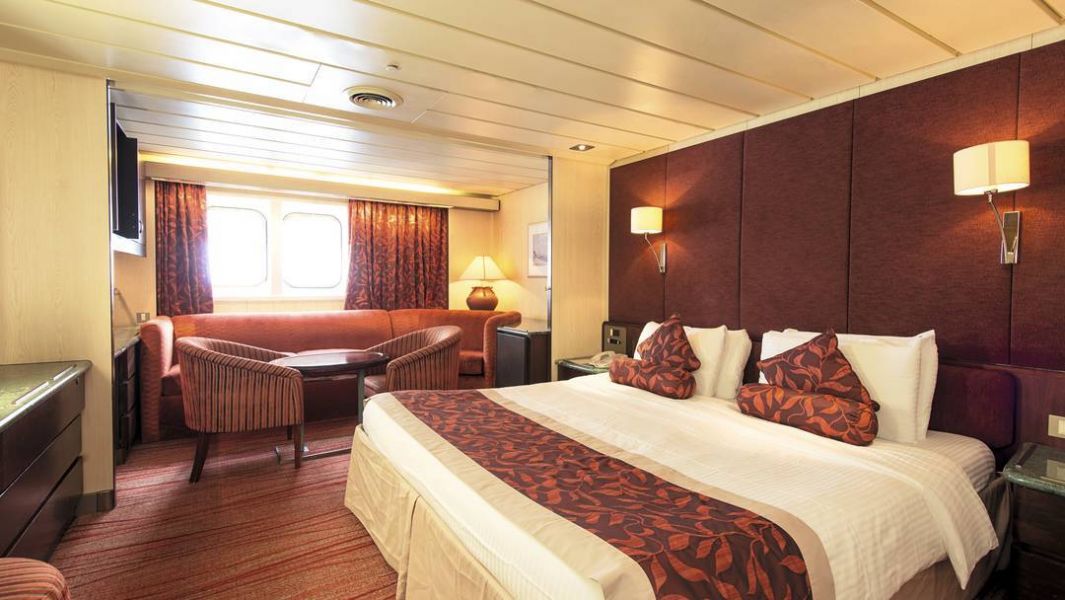
Treat yourself to one of these 20 Suites on decks 7 and 8 and you’ll be staying in a handsomely-sized room – 26-27m² – with a separate living area and bedroom. There’s a sofa and a table and chairs when you’re ready to relax and enjoy the sea views from your picture window, while a king-size bed will help you get a good night’s sleep. The sofa converts to a bed for a third person. The en suite bathroom has a shower over a bath and a WC. To ease you in to cruise life, they provide a minibar and an iPod docking station. Contemporary colours and dark wood furnishings give it all style appeal.
The view from these Suites is partially obstructed by lifeboats.
This cabin comes with Premier Service extras included:
The images shown are for illustration purposes only and may not be an exact representation of what you find on the ship.
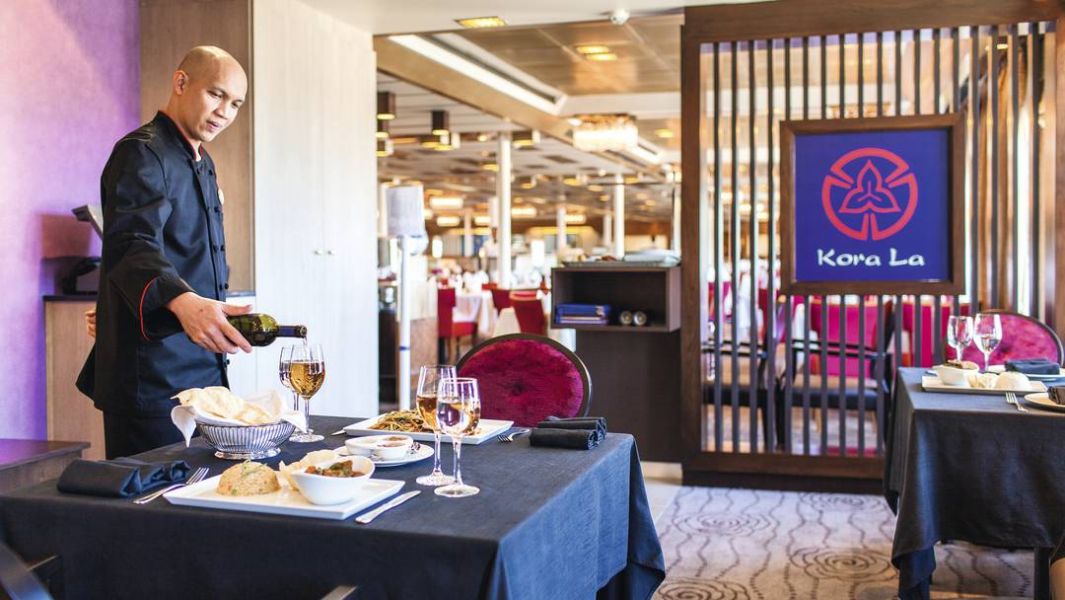
Marella Celebration welcomed a brand new restaurant for winter 2014. Kora La serves Asian dishes, with interiors that echo the exotic menu. Just so you know, a cover charge applies.
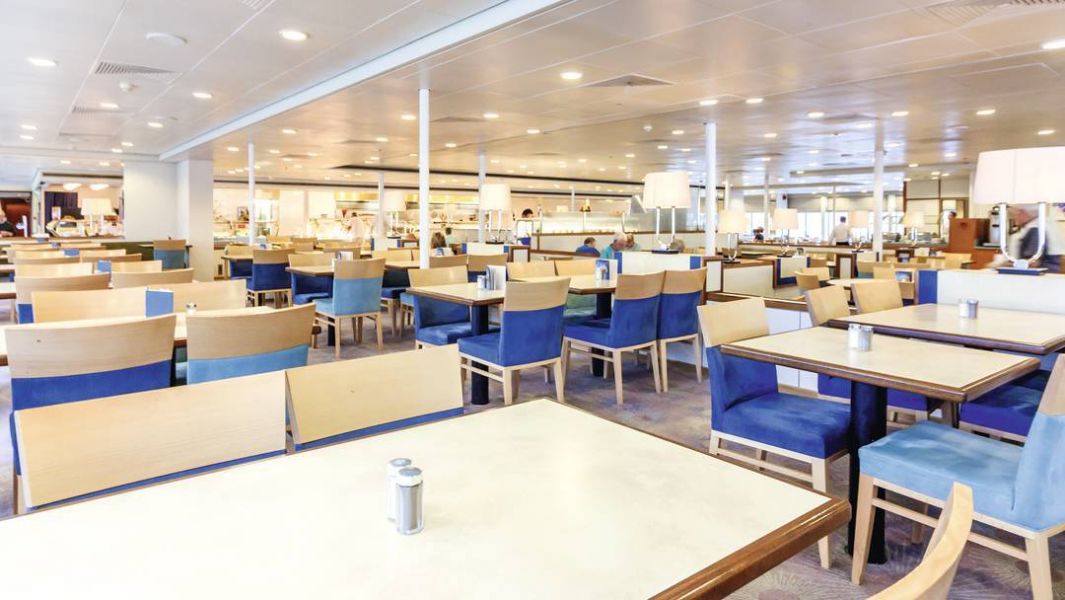
There’s a laid-back and friendly feel to this self-service buffet restaurant, which has an indoor and an outdoor dining area. It offers a huge choice of hot and cold meals, from full-cooked breakfasts first thing in the morning to lunchtime carveries and curries for late-night munchies. International theme nights – such as Indian or Mexican – are held every week.
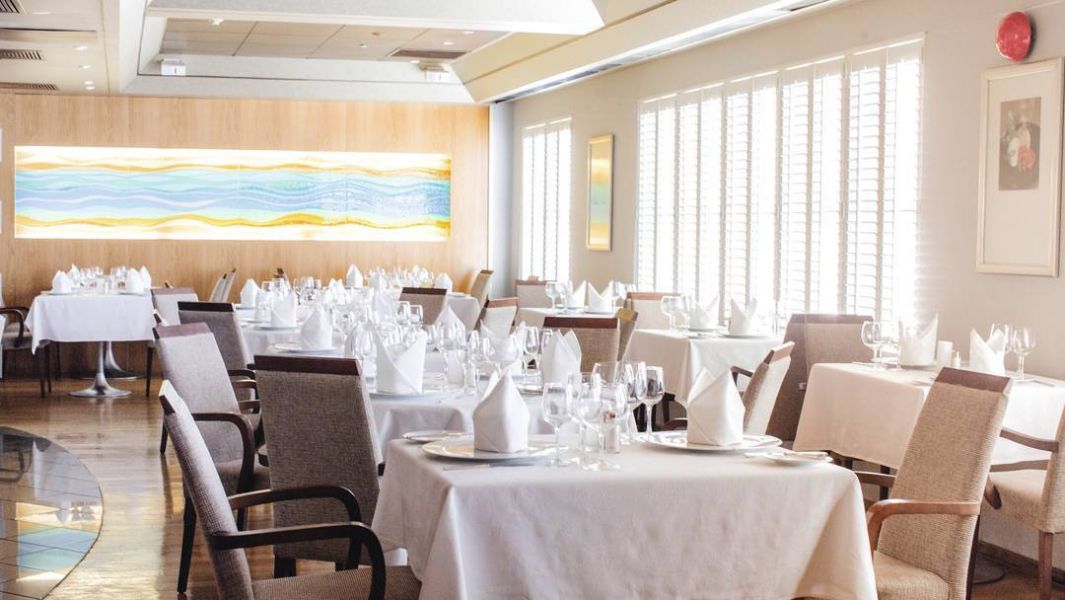
When it comes to extravagant dining, this place is a real gem. Pick the likes of lobster thermidor and lamb rack from the à la carte menu, and enjoy attentive waiter service in contemporary surroundings. Just so you know, a cover charge applies and you’ll need to make a reservation.
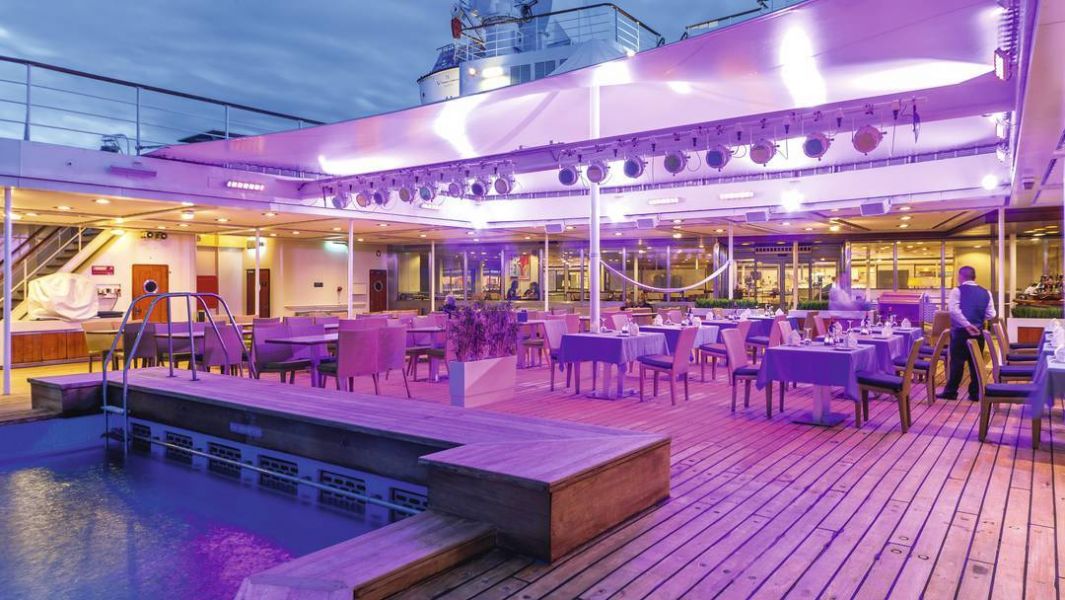
The Terrace Grill is two restaurants in one. In the evenings, it's an eatery where you can get steaks cooked just the way you like them on hot stones. During the day, it’s the place to come for light bites like pasta and salads. Just so you know, a cover charge applies in the evenings.
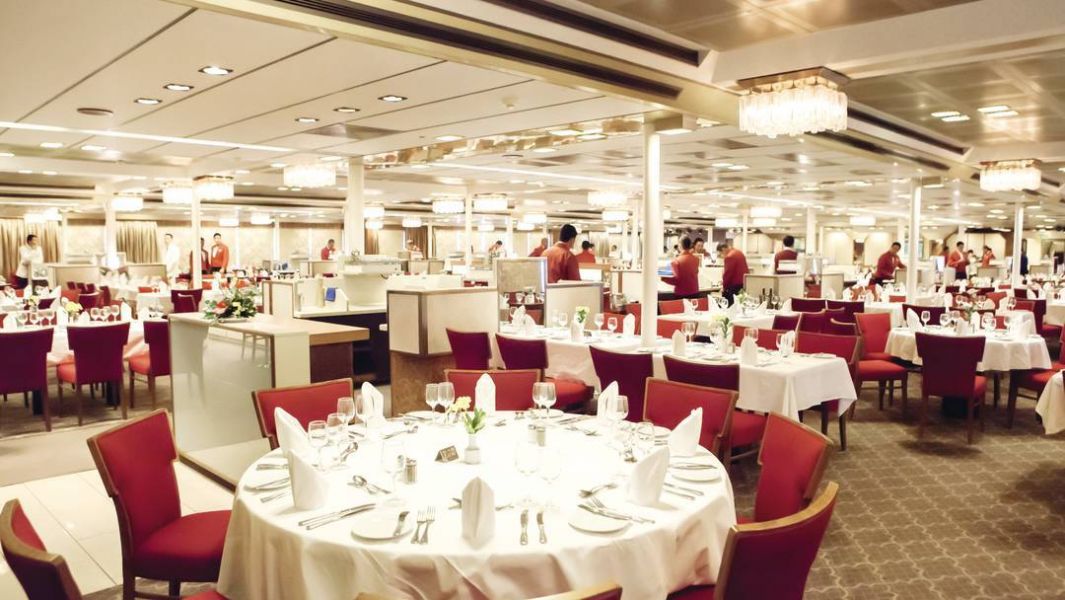
This spacious, low-ceilinged room is warmly decorated and offers breakfast, lunch and multi-course dinners with waiter service. Open seating means you’ll get a different table and different waiters for each meal.
The images shown are for illustration purposes only and may not be an exact representation of what you find on the ship.
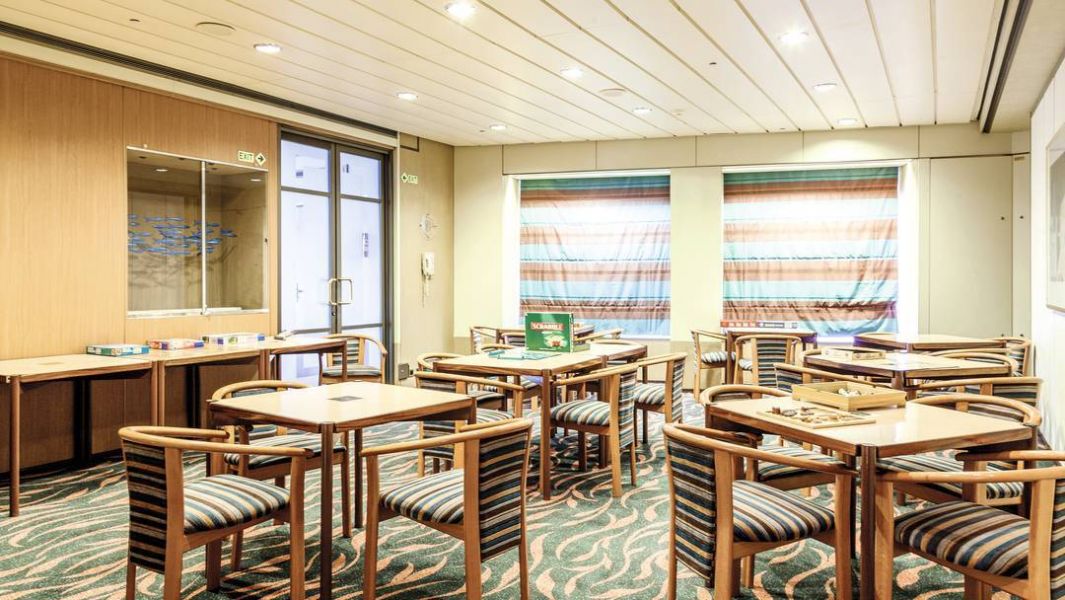
This quiet corner is just the ticket for board games and bridge.
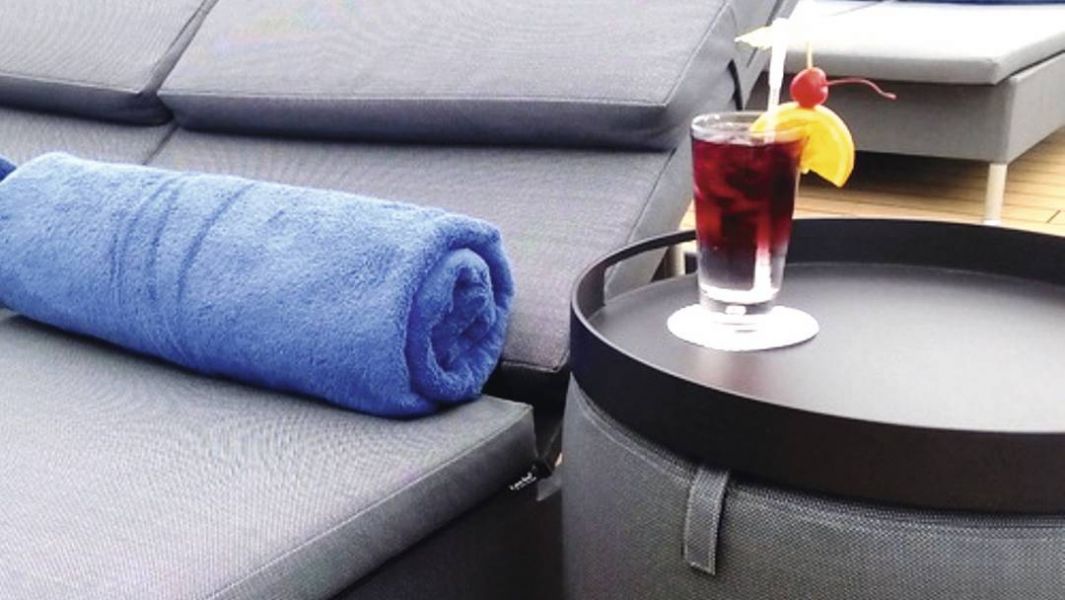
Brand new for winter 2014 is the Sun Lounge, an al fresco relaxation area with stylish daybeds and a bar.
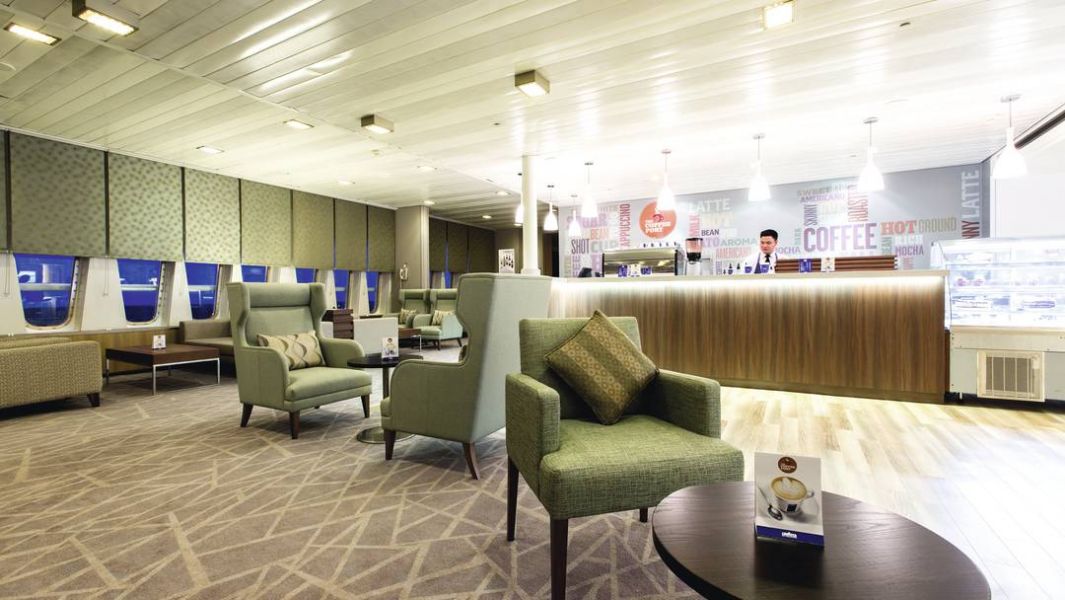
After dinner, head to the Explorers’ Lounge, where you can work your way through the cocktail menu or sit back with a glass of wine.
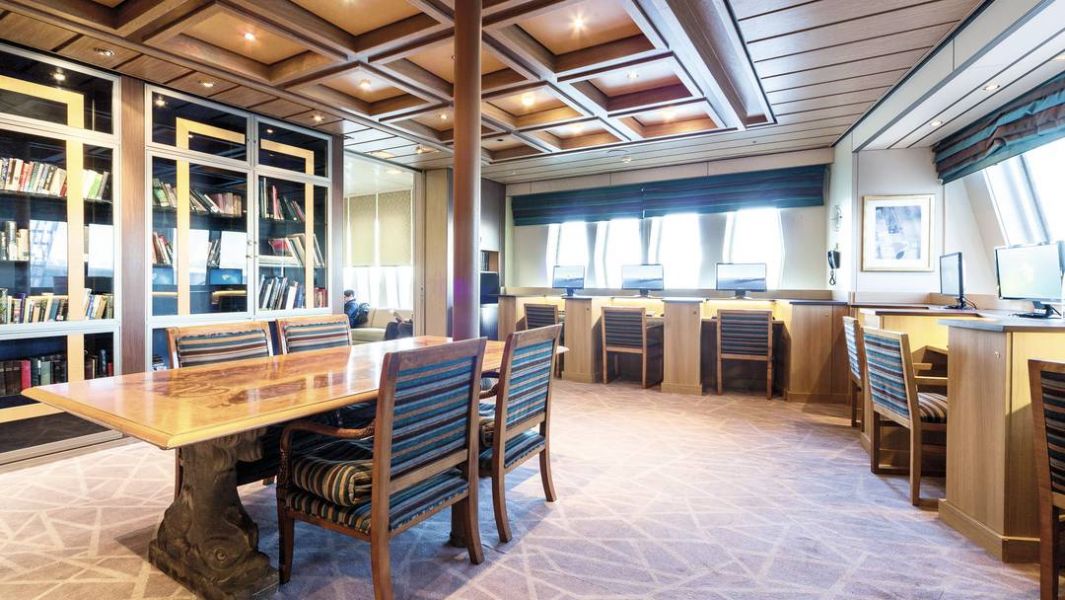
If you're looking for a guidebook or good novel, this is where you'll find them. This quiet space also has work stations where you can sit comfortably and browse the internet at a charge.
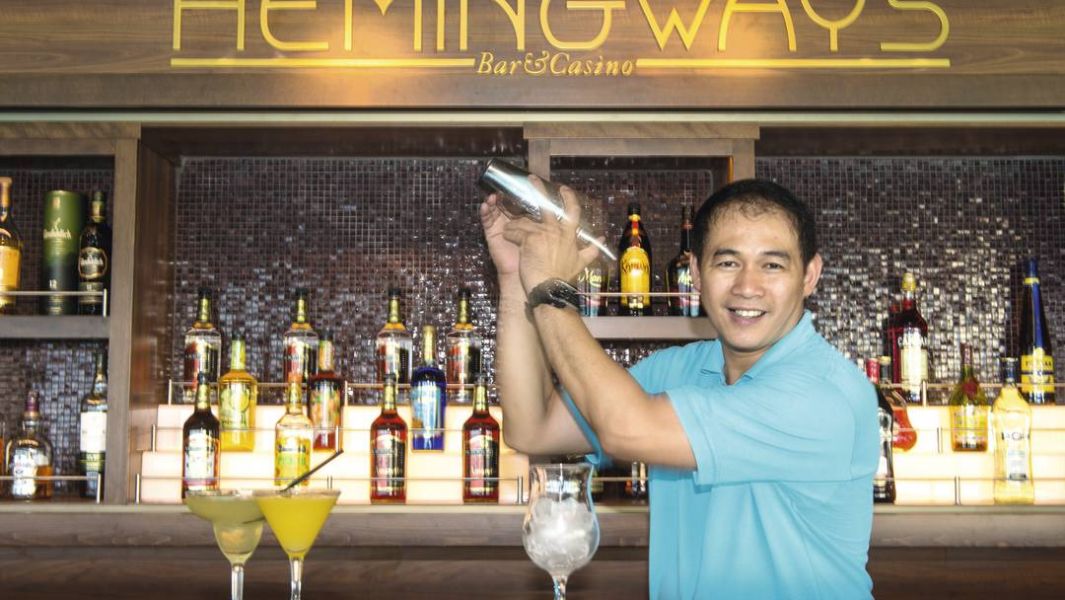
Because this traditional bar is close to the main restaurant and the show lounge, it makes an appealing rendezvous for pre-dinner drinks. Order the cocktail of the day at the long bar and listen to the sounds of the guitarist and the pianist while you work up an appetite. Or settle in to one of the sofas or cosy armchairs to chat with new friends.
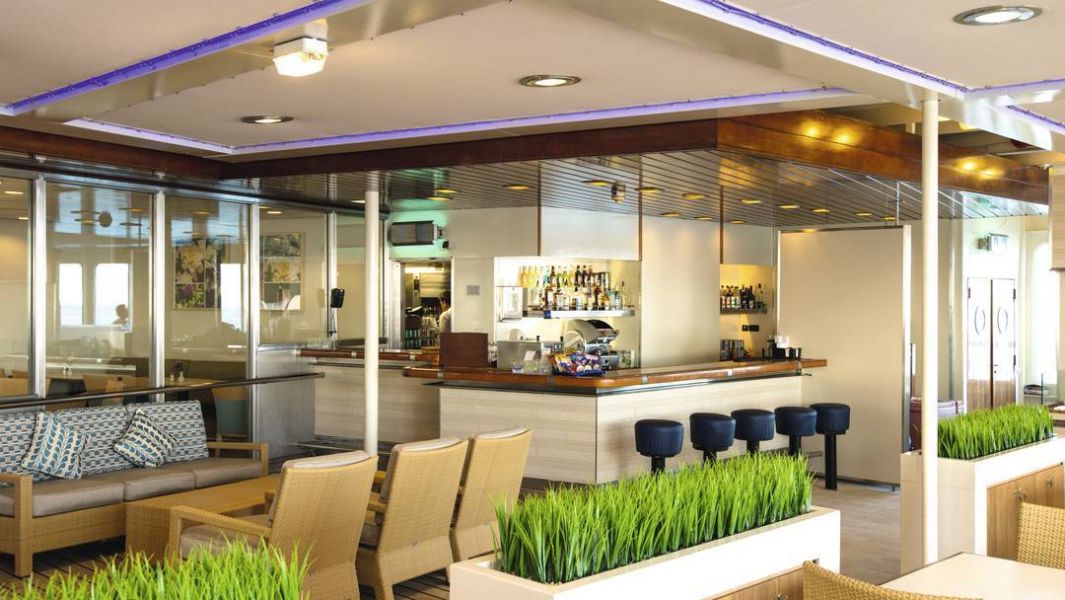
Set next to the pool and restaurant, there are chairs and tables here for al fresco eats and drinks. It makes a great space for cooking demos and games, and there’s usually a bit of live music in the afternoons.
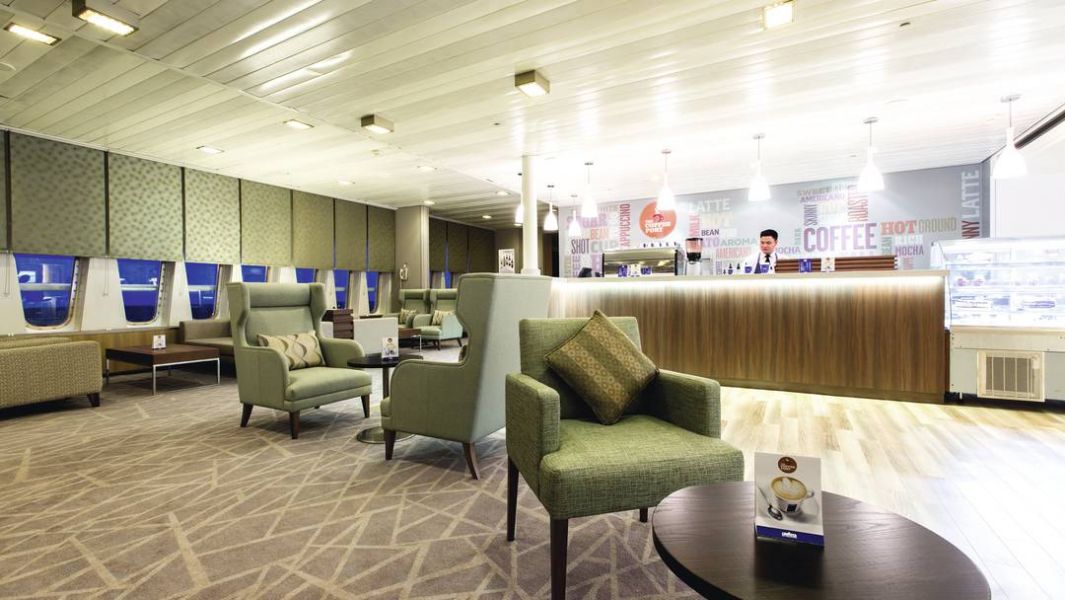
This coffee shop is just the ticket for a mid-morning pick-me-up. Why not tuck in to a just-baked muffin or cookie along with a freshly brewed Lavazza coffee? The Coffee Port is also one of the Wi-Fi hotspots, so while you’re here you can stay connected with friends and loved ones back home.
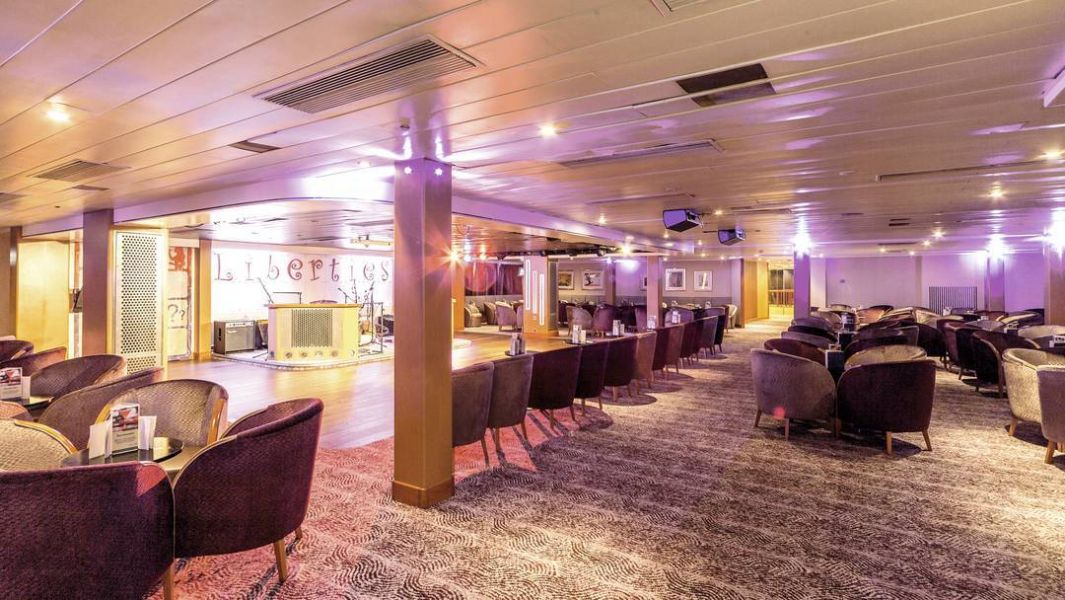
You can join in loads of activities in this lively lounge at the centre of the ship. Anyone up for line dancing or Zumba? For something a bit more laid-back, there’s bingo and film screenings during the day. Live bands, game shows, karaoke and disco music take over in the evening. There’s a great range of drinks in the bar here, too.
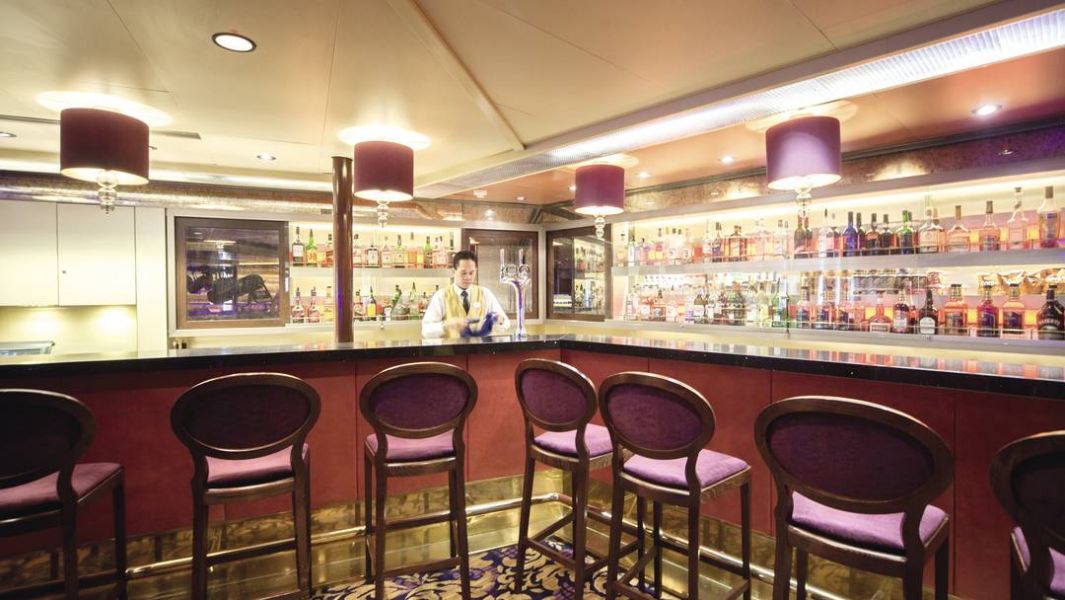
On the top level of the show lounge, this is the place to order your drinks before taking a seat for the night's entertainment.
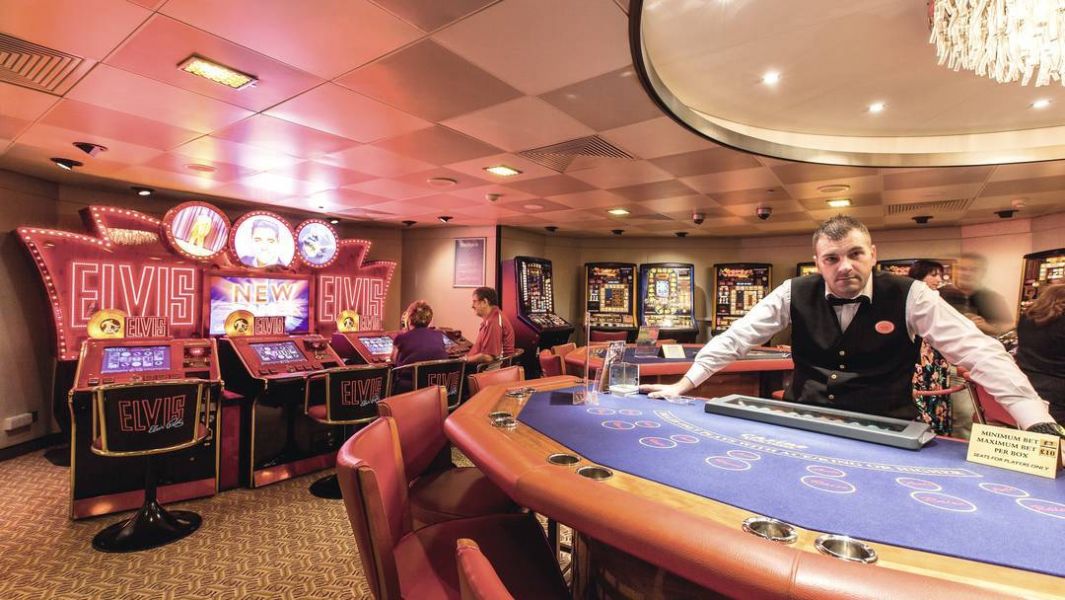
Sign up for a blackjack or poker lesson at one of the gaming tables here, or simply get to grips with the fruit machines. Maybe Lady Luck will be on your side.
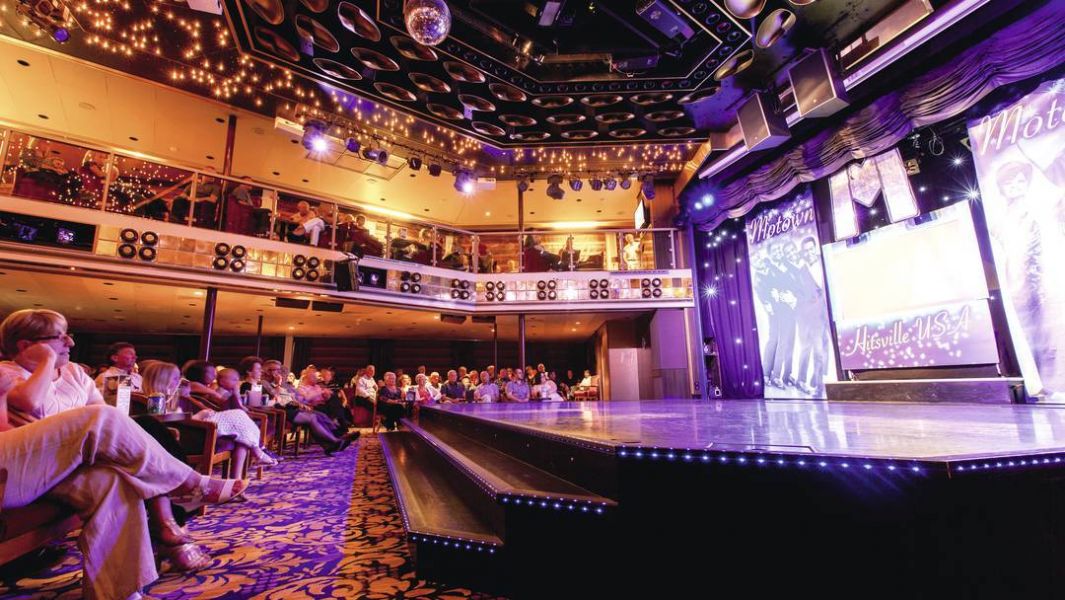
West End-style productions with plenty of razzle-dazzle and special guest acts from the UK take to the stage twice a night in this 2-floor starry show lounge. Musical numbers and dance routines will have you spellbound.

Just the place for cappuccinos and crosswords. This is spot-on when you want to relax in gracious surroundings and enjoy a quiet drink and casual chat. Great views out of the large windows, cosy seating and laid-back tunes seal the deal.
The images shown are for illustration purposes only and may not be an exact representation of what you find on the ship.
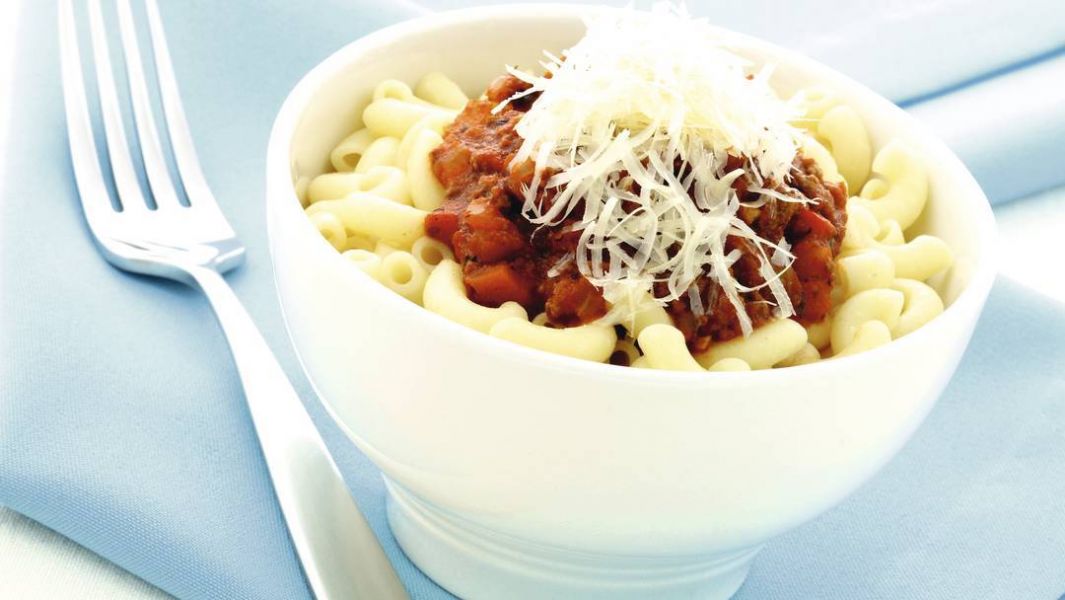
Dining doesn’t have to be a formal affair onboard. Their buffet restaurants have a huge choice of dishes for a relaxed family get-together. For children, there are favourites like pasta and fries on the menu, with ice-cream cones for pudding. The afternoon teas – all gooey cakes and freshly baked scones – are a firm favourite, and there are regular barbecue lunches out on deck. Don’t miss our Baked Alaska Parade, either.
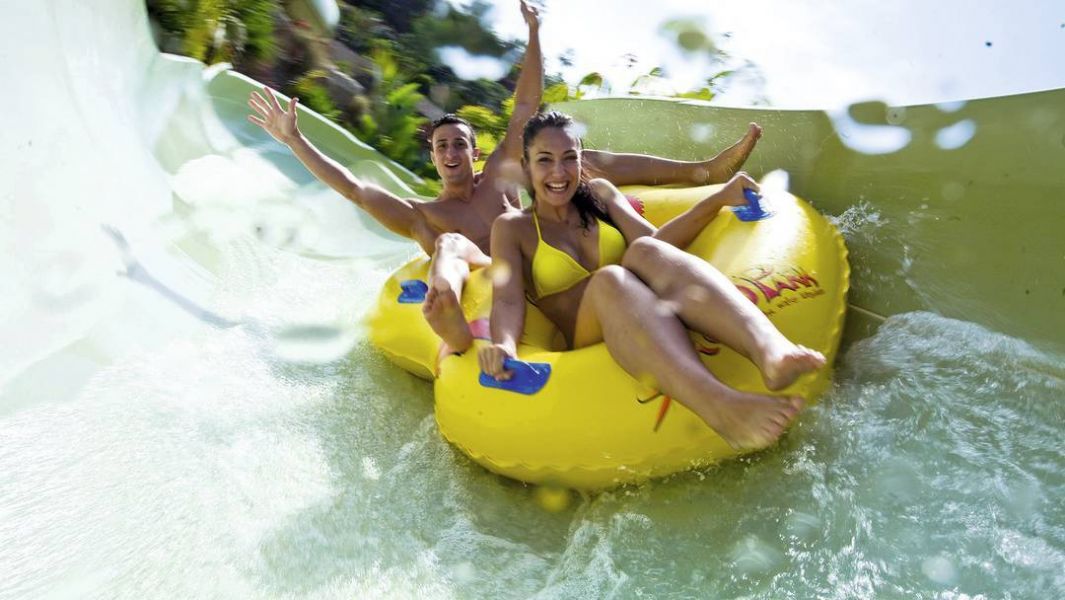
One of the perks of cruising is visiting lots of new places one after the other. They’ve got a range of shore excursions for the whole family. For little ones, they organise trips to waterparks, aquariums and beaches, plus once-in-a-lifetime experiences like swimming with stingrays and dolphins. If you’re travelling with children aged 10 and over, there’s also the option of 2 wheels. Most of their ships have mountain bikes onboard. At almost every port, you can join an experienced guide and pedal your way around the best sights.
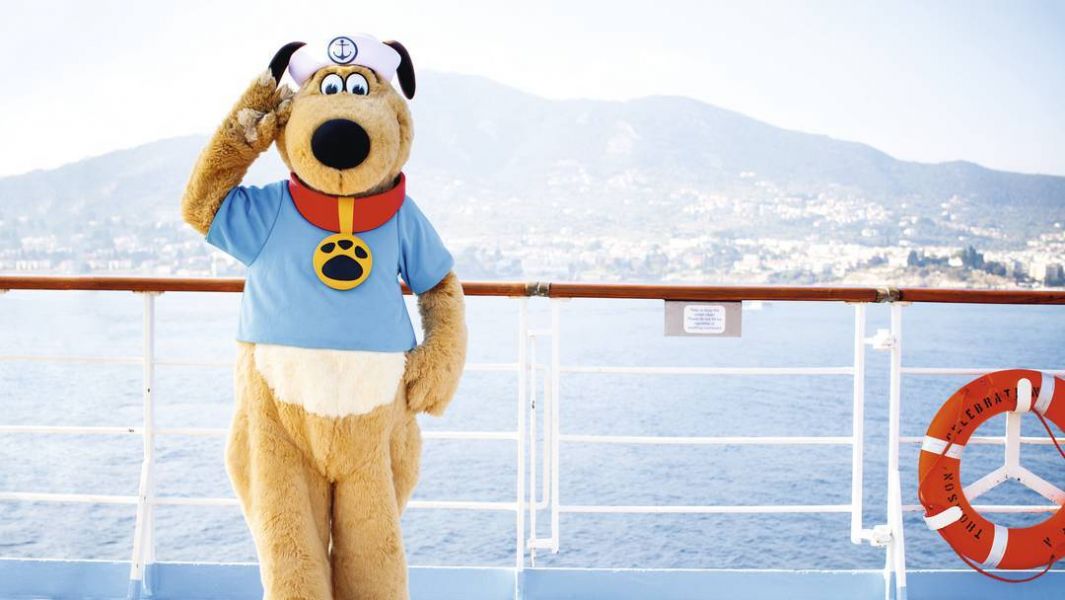
Keep your eyes peeled for Thomson the Dog during your family holiday. He’s been known to pop up at the poolside for story time, and he’s rather fond of a photo session or 2.
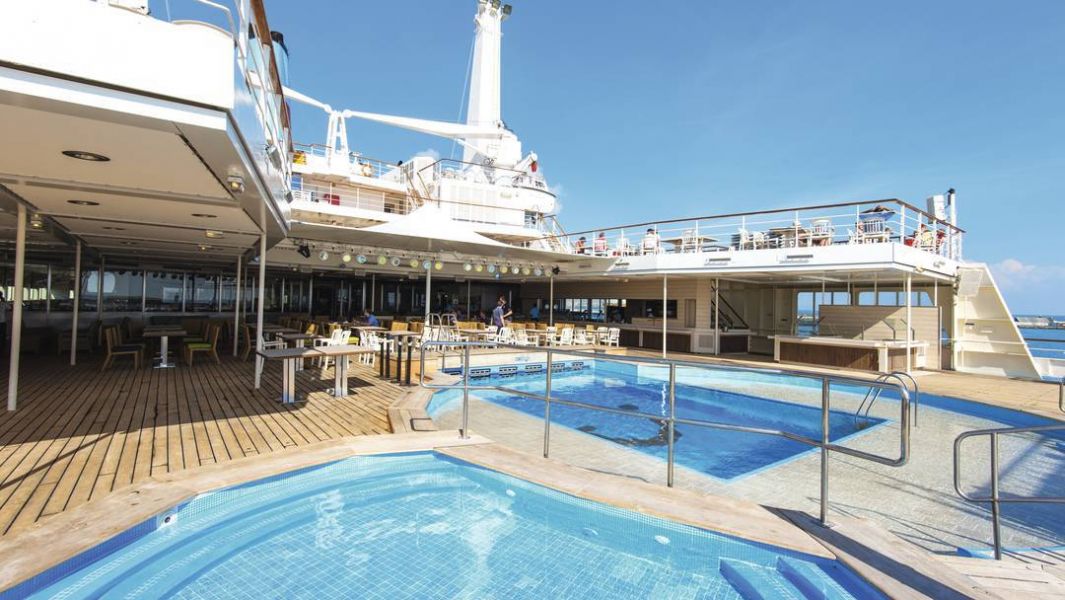
There’s a separate pool for the kids to let off steam.

Wannabe Harry Styles and budding Lady Gagas will be in their element at the Showtime Stage School. Here, 9 to 16-year-olds can learn the tricks of the trade from the professionals, as the onboard show team puts them through their paces with acting, dancing and singing workshops. At the end of the cruise, there may even be a live performance. Three 90-minute lessons cost £35 per child. Just so you know, though, they only run if there’s enough demand.
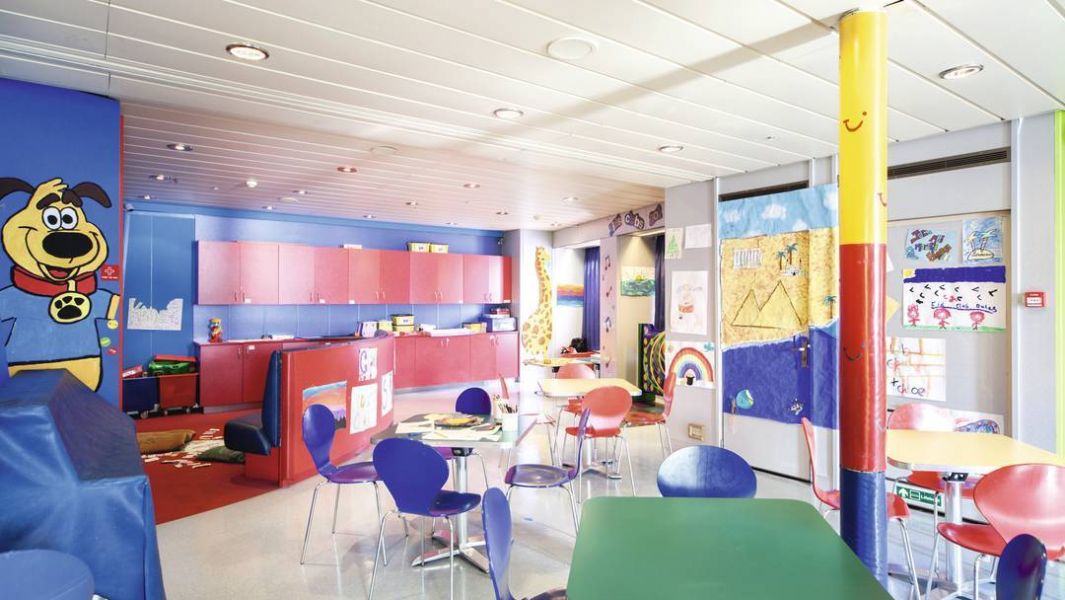
The accredited staff at the onboard Kids’ Club do a brilliant job keeping youngsters entertained. There’s messy time with arts and crafts, dressing-up, movie nights and pyjama parties. Trips to the bridge to high-five the captain and behind-the-scenes backstage tours also make the line-up. They’ll even take your little ones to breakfast a couple of times a week while you get a lie-in. Groups are split in to 2 or 3, depending on ages and numbers. Tots is for 3 to 5-year-olds and Team is for 6 to 8 years – sometimes these 2 are combined. They’ve also got lots of activities that hit the mark for the 9 to 11 age group, in Tribe. Best of all, the club is free.
The images shown are for illustration purposes only and may not be an exact representation of what you find on the ship.
| 7 nights aboard the Marella Celebration | |||
| All inclusive drinks Included | |||
| Gratuities included | |||
| Evening entertainment & theatre shows | |||
| Port Taxes and Fees | |||
 | ABTA and ATOL Protection* | ||
Fusion Cruises when selling travel arrangements is a trading name of The Midcounties Co-operative Ltd. Fusion Cruises is an Accredited Body Member of Midcounties Co-operative Travel Consortium. (ABTA:P6652, ATOL:6053).
Book with Confidence. We are a Member of ABTA which means you have the benefit of ABTA’s assistance and Code of Conduct.
Some of the flights and flight-inclusive holidays on this website are financially protected by the ATOL scheme but ATOL protection does not apply to all holiday and travel services offered on this website. This website will provide you with information on the protection that applies in the case of each holiday and travel service offered before you make your booking. If you do not receive an ATOL Certificate then the booking will not be ATOL protected. If you do receive an ATOL Certificate but all parts of your trip are not listed on it, those parts will not be ATOL protected. Please see our booking conditions for information, or for more information about financial protection and the ATOL Certificate go to: www.caa.co.uk
